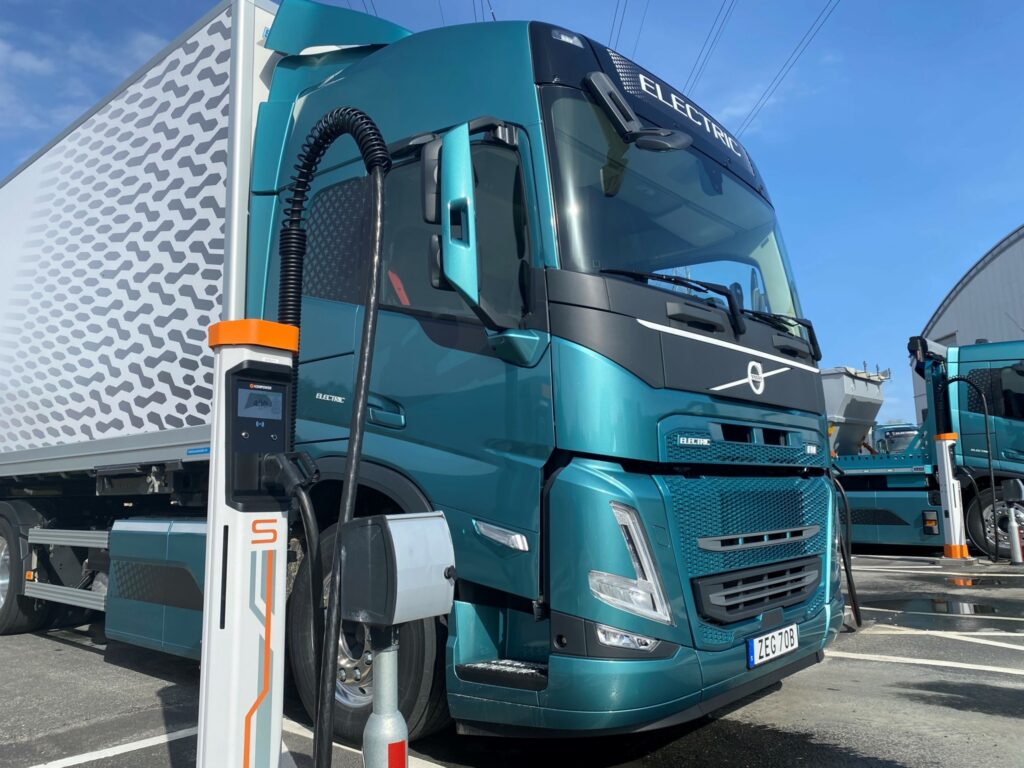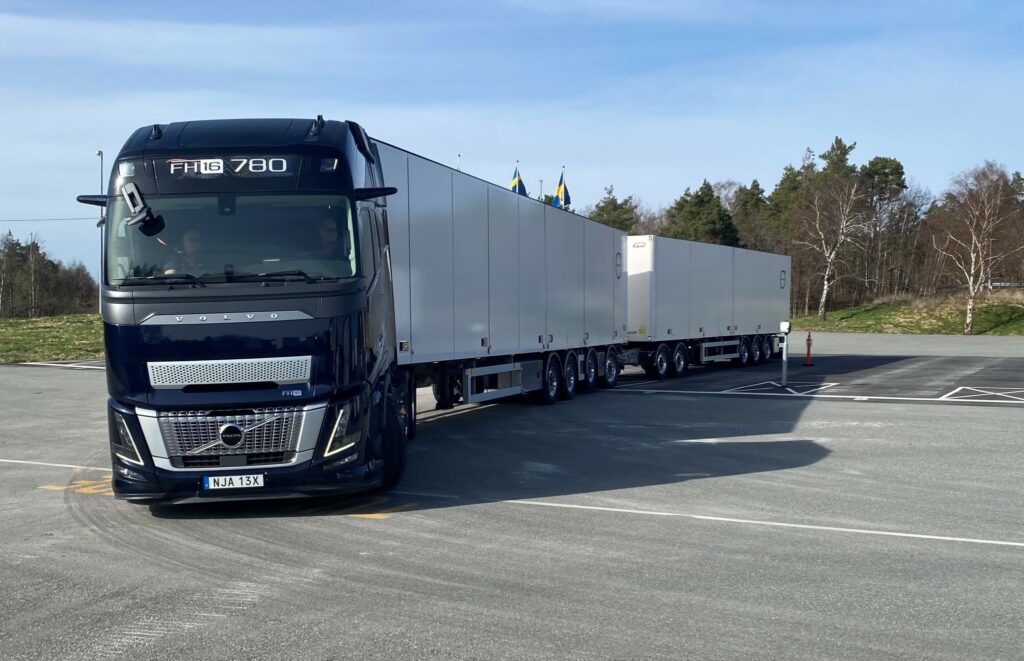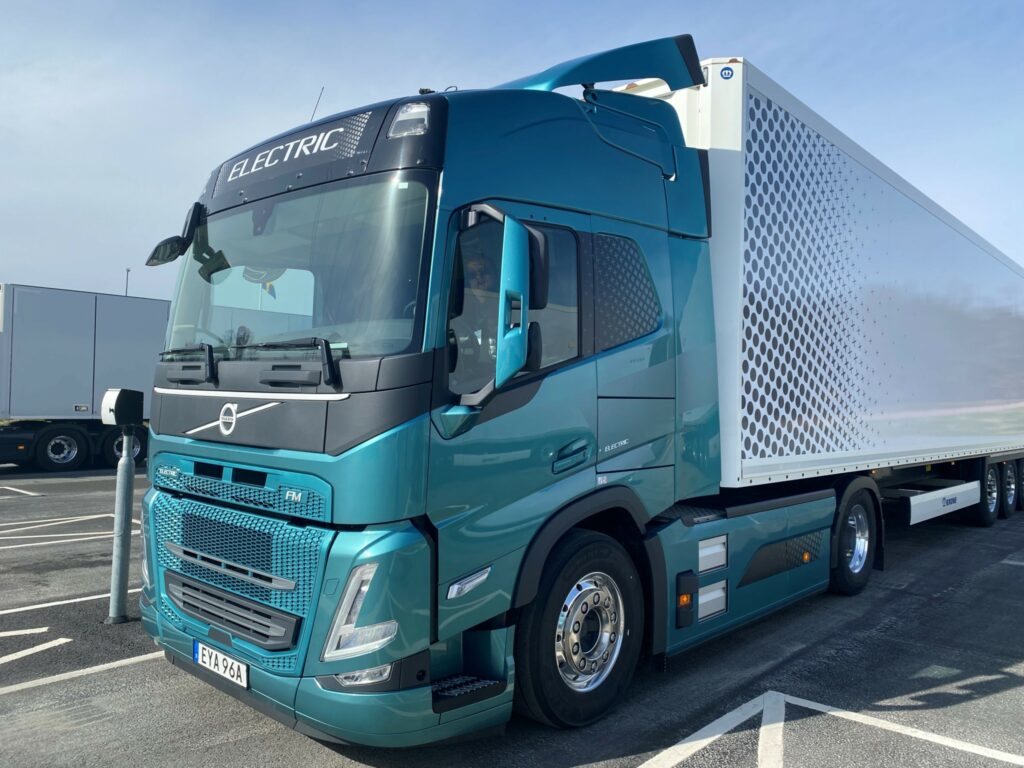Volvo sees three paths to zero emissions
Volvo Trucks is charting three separate courses, each of which will take it to the same end result – that of being a zero-emission truck maker.
None of those options involve building fewer trucks. “We believe that the world needs more transport,” said Lars Stenqvist, chief technology officer at Volvo Group, speaking to visiting journalists at Volvo in Gothenburg, Sweden. “We also are the first ones acknowledging we can’t just extrapolate what we have today.”

Volvo has decided battery-electric, fuel-cell-electric, and internal combustion engines using fossil fuel-free fuels, will be the three paths to zero emissions. Surprisingly, this year Volvo will spend more money than ever before on R&D on internal combustion engines.
These, in the future, may be fueled by hydrogen or other fossil fuel-free fuels. Volvo is working with Canada’s Westport to develop high-pressure direct injection (HPDI) engines fueled by hydrogen. The fly in the ointment there is that the product still requires a small dose of diesel fuel to initiate combustion, and therefore requires today’s emissions aftertreatment systems such as a particulate filter and selective catalytic reduction.
The challenge will be to replace that pilot fuel with a zero-emission alternative. And Stenqvist wants regulators to step aside and let truck and engine OEMs select the best technology available to meet their stringent emissions targets.
Hydrogen fuel-cell-electric trucks are another option Volvo likes. It’s working with rival Daimler through its cellcentric joint venture to design and produce fuel cells. These will provide a range of 1,000 kms and fueling time of just 15 minutes, giving them an advantage over battery-electric trucks in longer-haul and heavier applications.
Performance-wise, the two technologies are similar.
“When I drove [a FCEV] I felt disappointed,” Stenqvist said. “Why? I said to myself, this feels just like an electric truck- and it is.”
FCEV and battery-electric trucks perform similarly, he said. It’s just the manner of energy storage that varies.
Zero-emissions only by 2040
Volvo plans to build only zero-emissions trucks by 2040, and to have a fully zero-emission rolling fleet of vehicles 10 years later.
“We have the biggest challenge ever,” Jan Hjelmgren, head of product management and quality, Volvo Trucks, said of the mission ahead. Volvo currently has battery-electric trucks running in 45 different countries around the world, including Canada.
It has eight electric truck models in series production globally, including the VNR Electric in North America. More than 3,000 such trucks are currently operating in real-world customer applications, and last year they put on 35 million kilometers. Hjelmgren said Volvo commands 60% of the BEV market in Europe.
But getting those trucks out in the hands of fleets remains a learning process. In some cases, fleets are spec’ing too much on-board battery capacity. Volvo is also working to boost the amount of remote diagnostics that can be performed on these vehicles, since the technology is new to most fleets and their technicians.

Volvo admits to having some struggles in securing battery packs for its electric trucks in the North American market. It is addressing those challenges by building its own battery packs, both in Europe and North America.
In Mariestad, Sweden, Volvo is building a massive battery plant. The factory itself will be 900 by 600 meters, and 400 meters high at its tallest point. Volvo chose the small town of Mariestad because of its central location in the country, which more than 21% of the country’s industrial employees call home.
The plant will undergo construction beginning in 2025 and will be entering serial battery production by 2030. Volvo plans to produce 300,000 tons of batteries at the plant each year, and it will bet he largest industrial project in the history of the company. The plant will sit on 400 acres and have 135 acres of floor under the roof.
Battery production
In North America, Volvo bought the assets of Proterra when it entered Chapter 11 bankruptcy protection. Proterra was primarily an electric bus manufacturer but ran into financial hardships when it grew too fast. Peter Granqvist, senior vice-president, Volvo Group electromobility technology, said it presented a great opportunity for Volvo to take control of more of its battery production and supply chain in the North American market.
Volvo acquired its R&D test center in California, and a plant in South Carolina where it builds its battery modules and packs.
“We believe the technology Proterra already has put into the market and the generation right now being ramped up is very robust,” said Granqvist. “It was designed only for commercial vehicle use from the very beginning and it has very high energy density and a flexible platform that can be used for many types of applications.”
Lars Martensson, environment and innovation director, said Volvo is not focused only on eliminating tailpipe emissions. While diesel-fueled trucks produce most of their emissions while in use, battery-electric vehicles have a greater climate impact during their production. To this end, Volvo is looking to lessen the emissions it creates when building trucks, taking a “cradle to gate” view of their truck building emissions output.
“The supply chain and production are extremely important,” Martensson said. Volvo considers the environmental impact of individual supplier components such as steel and iron, batteries, aluminum, polymers, and electronics.
Fossil-free steel
It is working with steel maker SSAB to use fossil-free steel for the frame rails, even though it currently costs a premium.
“SSAB saw an opportunity here when it comes to reducing the climate impact from steel,” said Martensson. “The problem for them was to find customers. We raised our hand and said we can be your first customer.”
Volvo has begun taking delivery of the fossil-free steel, though it hasn’t yet put it into series production vehicles. Volvo plans to encourage its suppliers to adopt fossil-free steel for construction of their own products. Martensson believes Volvo will be using fossil-free steel more broadly within the next few years.
Hydrogen is another path Volvo is taking to eliminate emissions. Helena Alsio, Volvo Trucks powertrain product manager, touted its benefits including fast fueling time and an ability to power electric trucks without impacting the local grid.
“We believe there will be widely available hydrogen in the future, as many heavy industries will rely on hydrogen in order to remove and reduce their carbon footprint,” Alsio said.
In addition to building fuel cells through cellcentric, Volvo is also working with Canadian company Westport on high-pressure direct injection (HPDI) hydrogen engines. While promising, that technology currently requires a diesel pilot injection so it’s not completely emission-free. Volvo sees an opportunity to replace diesel with a cleaner pilot fuel to address that issue.
The HPDI technology allows fuel to be injected at higher pressure, offering power density comparable to diesel, added Staffan Lundgren, senior technical advisor, Volvo Group truck technology.
“We believe that hydrogen internal combustion and fuel cells with both have a position in the market,” Lundgren said. HPDI hydrogen will be less expensive but will have emissions factors to overcome.
In the meantime, significant emissions reductions are available using alternative fuels in internal combustion engines. Moving from diesel to renewable diesel slashes Co2 by 67%, Martensson said.
“It’s not enough to think about electricity or gas or liquid fuels, you also need to think about how is that fuel being produced?” he said. “Decision makers also have to think about that. The climate benefits of an electric truck depends very much on what type of electricity you have available.”
The good news is, Ontario and Quebec are among the cleanest electricity producers in the world. Other parts of Canada, however, still produce electricity using coal plants. The same goes for hydrogen – the cleanliness of the fuel depends on how it’s sourced. Today, blue hydrogen is the most common worldwide; it’s produced using natural gas as a feedstock and the carbon is captured. Grey hydrogen – that produced from natural gas without carbon capture – offers no climate advantage over diesel.

Have your say
This is a moderated forum. Comments will no longer be published unless they are accompanied by a first and last name and a verifiable email address. (Today's Trucking will not publish or share the email address.) Profane language and content deemed to be libelous, racist, or threatening in nature will not be published under any circumstances.
These huge conglomerates throw the “zero emission” pitch around every day. Do they expect the educated to believe they are actually saving the planet? All they are doing is playing a PR game. As long as this country is producing electricity by burning coal or natural gas, they are only moving the shells around the board. When the entire countries energy comes from hydro, nuclear, wind or solar, and then you mine the ore for the batteries with electric mining equipment, then you can talk about your “journey to zero”. . Until that day, its just smoke and mirrors.